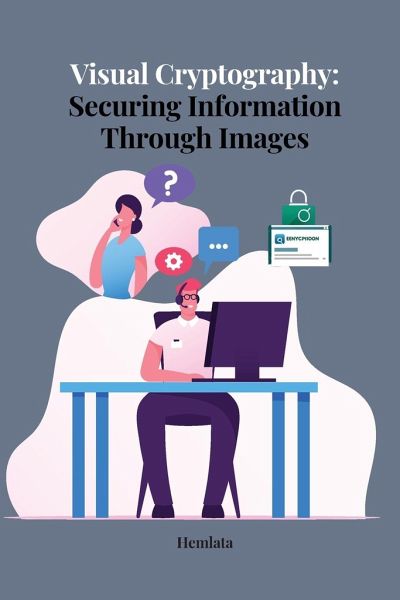
Visual Cryptography Securing Information Through Images
Versandkostenfrei!
Nicht lieferbar
Visual Cryptography: Securing Information Through Images is a comprehensive book that discusses a novel approach to secure data using images. Authored by Hemlata, the book offers an in-depth understanding of visual cryptography, its principles, applications, and limitations. In today's digital era, data security is a crucial aspect that must be considered to protect sensitive information from being accessed by unauthorized persons. Visual cryptography is a unique and innovative method that uses images to encrypt and decrypt secret information. The technique involves splitting a secret image in...
Visual Cryptography: Securing Information Through Images is a comprehensive book that discusses a novel approach to secure data using images. Authored by Hemlata, the book offers an in-depth understanding of visual cryptography, its principles, applications, and limitations. In today's digital era, data security is a crucial aspect that must be considered to protect sensitive information from being accessed by unauthorized persons. Visual cryptography is a unique and innovative method that uses images to encrypt and decrypt secret information. The technique involves splitting a secret image into multiple shares that are distributed among different individuals. Each individual holds a share of the image, and only when all the shares are combined, the original image can be revealed. The technique ensures that the information remains secure, as an attacker who obtains a single share cannot reconstruct the original image. Visual Cryptography: Securing Information Through Images begins with a brief introduction to cryptography and its importance in securing data. The book then delves into the basics of visual cryptography, including its history, principles, and various methods used in the process. The author also highlights the differences between traditional cryptography and visual cryptography and explains why visual cryptography is a more efficient method for certain applications. The book then goes on to discuss in detail the process of encoding and decoding messages using visual cryptography. The author explains the steps involved in splitting the original image into multiple shares, as well as the methods used to combine the shares to obtain the original image. The author also provides several examples to help readers understand the concept better. The book also discusses various applications of visual cryptography, including digital watermarking, biometric authentication, and secure communication. The author explains how visual cryptography can be used to protect digital images from being copied or altered without permission. The book also covers the use of visual cryptography in biometric authentication systems, where it can be used to store and authenticate biometric data securely. The author also explains how visual cryptography can be used to encrypt and decrypt messages in a secure communication system. The limitations of visual cryptography are also discussed in the book. The author explains how visual cryptography is vulnerable to attacks such as pixel expansion and collusion attacks. The book also highlights some of the ongoing research in the field and discusses potential solutions to overcome the limitations of visual cryptography. In conclusion, Visual Cryptography: Securing Information Through Images is an excellent book that provides a comprehensive understanding of visual cryptography. The author has presented the concepts in a clear and concise manner, making it easy for readers to understand the complex topic. The book is ideal for students, researchers, and professionals interested in cryptography, data security, and digital image processing.








